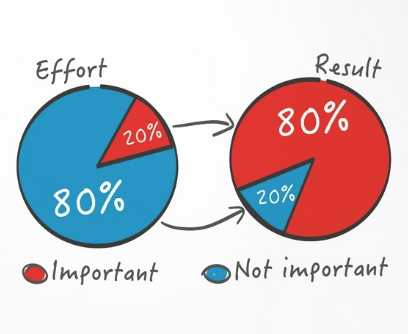
Vilfredo Pareto, a famous Italian economist stated his belief was that 80% of issues stemmed from 20% of causes. When applied in the context of manufacturing this is interpreted as 80% of downtime is attributed to 20% of causes.
If we look at the Pareto principles and apply them to our own business, I think you would see the validity. It begs the question how do we isolate the pesky 20%?
Big Data
Data is the key to solving most problems. Data is used to analyse, isolate, identify, plan and rectify. The easiest way to perform these types of analytics is to use computer software. Ti4 curates software that targets your 20%. Whether it be data entry caused by human error, connectivity issues between the office and factory floor or underutilisation, we can help.
It is important to note that acquiring slick software and state-of-the-art machinery will not on its own solve problems. Equal importance and investment must be placed in your staff. Communication and training are keys when updating your business model. Lack of training leads to ineffective usage of technology and a net result of large capital outlay with no efficiency gain.
Ti4 makes the following recommendations when commissioning and introducing new software
-
Speak to your ground-level staff, what is working and what is not?
-
UAT (User Acceptance Testing) TEST, TEST, TEST and RE-TEST some more
-
Customise your software so it stays relevant to YOUR business
-
Plan training sessions and industry updates for all staff regularly
-
When commissioning new software ensure you use it at least once in the first week of release and build from there
-
Establish a pattern of usage and enforce all staff to utilise technology as the only medium
-
Request advanced training sessions when all staff are fully proficient with basic training
-
Ensure all new staff are properly trained and inducted on commencement of employment
We offer training, re-training and advanced training on all software. All sessions can be conducted remotely, no travel necessary.
Implementing software and training are key steps to your successful journey to a digital transformation, however, there are other points to consider
-
Overcoming legacy issues whether it be your ERP system or your server
-
Organisational structure and adherence to new systems
-
Ensuring cohesion with your technology stack
-
Customisations to meet the current consumer market
Our team has upgraded systems server, infrastructure and provided peripherals on many occasions. We have a list of trusted third-party suppliers. Make an enquiry and identify your 20%.
× 175
